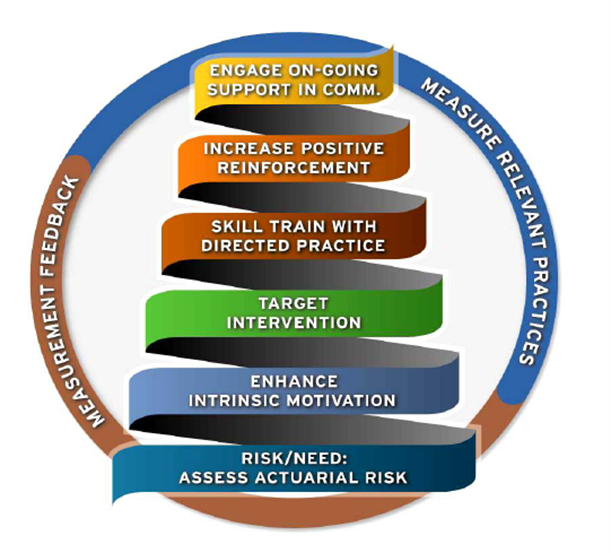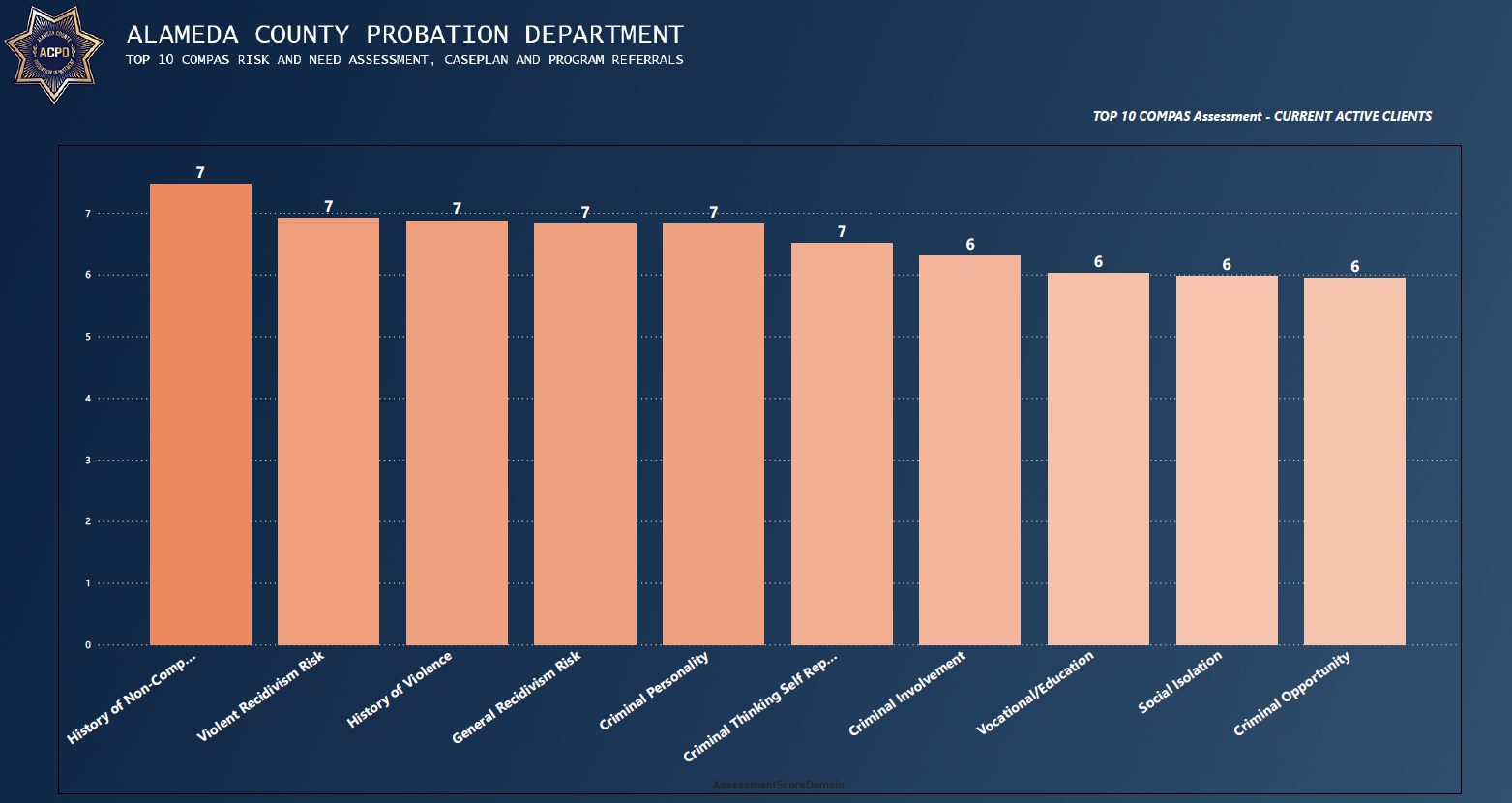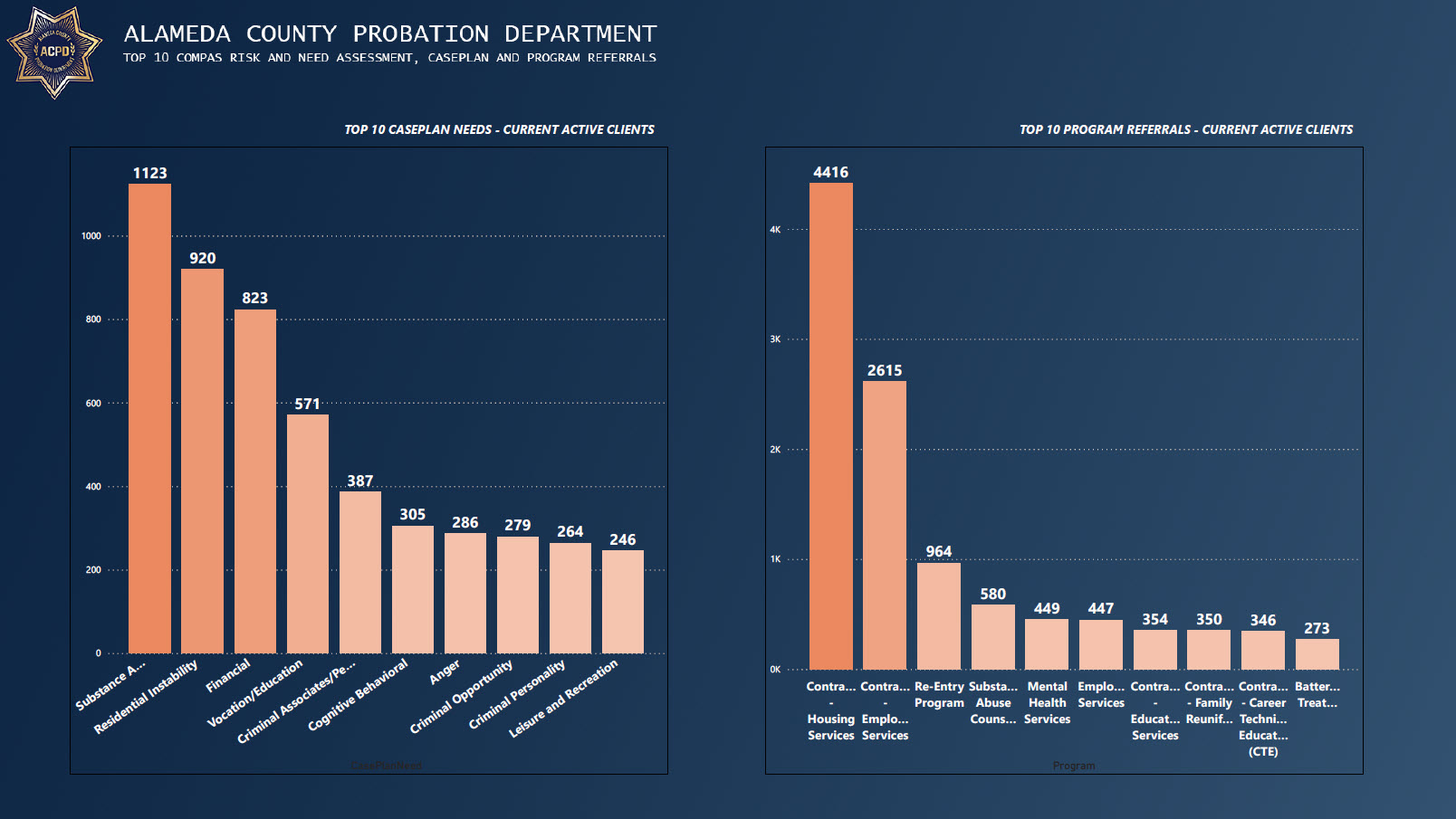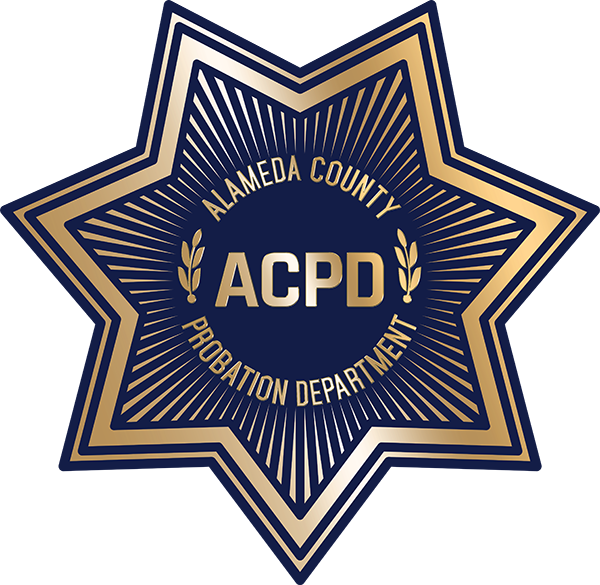Best Practices & Innovative Strategies
![]()
Vision
Committed to having the most innovative and cutting edge evidence-based organization (EBO) in community corrections.
Purpose
Implement best practices throughout the entire Department with fidelity to improve outcomes for our staff and community.

THE EIGHT PRINCIPLES OF EBP FOR EFFECTIVE INTERVENTIONS
| Principle | Description |
|---|---|
|
Assess Actuarial Risk/Needs |
|
|
Enhance Intrinsic Motivation |
|
| Target Interventions |
|
| Skill Train with Directed Practice |
|
| Increase Positive Reinforcement |
|
| Engage Ongoing Support in Communities |
|
| Measure Relevant Processes/Practices |
|
| Provide Measurement Feedback |
|
THE BIG FOUR DYNAMIC FACTORS
| Dynamic Factor | Response |
|---|---|
|
Cognitive Behavioral |
|
|
Social Environment |
|
|
Personality |
|
|
Family and/or Marital (Partner or Significant Other) |
|
THE LESSER FOUR DYNAMIC FACTORS
| Dynamic Factor | Response |
|---|---|
|
Substance Misuse |
|
|
Employment |
|
|
School |
|
|
Family and/or Marital (Partner or Significant Other) |
|
Adapted from: Andrews, Donald A (2007). “Principles of Effective Correctional Programs”, in Motiuk, Laurence L. and Serin, Ralph C. (2007). Compendium 2000 on Effective Correctional Programming. Correctional Service Canada. csc-scc.gc.ca/text/rsrch/compendium/2000/index-eng.shtml
ACPD’s Top 10 COMPAS Assessment Dynamic Factors

ACPD’s Top 10 Case Plan Needs and Top 10 Program Referrals

RESOURCES
BP BLASTS
The following documents are archived and may not be fully accessible. To request an accessible version or a reasonable accommodation, please contact Yasmin Burke at (510)667-3015 or yburke@acgov.org.
| Date, Issue | Links |
|---|---|
|
December 2025 Issue
|
|
|
October 2025 Issue
|
|
|
August 2025 Issue
|
|
|
June 2025 Issue
|
|
|
April 2025 Issue
|
|
| February 2025 Issue | |
| December 2024 Issue | |
| June 2024 Issue | |
| April 2024 Issue | |
| February 2024 Issue | |
| December 2023 Issue | |
| October 2023, Issue | |
| August 2023, Issue | |
| April 2023, Issue | |
| February 2023, Issue | |
| December 2022 Issue | |
| October 2022, Issue | |
| August 2022, Issue |
Below is a list of internal and external, web-based resources that can be used to find information about Evidence-Based Practices (EBPs), best practices and other research-driven programming that has been found to be effective in supporting our juvenile and adult clients through their reentry journeys.
Please click on links below to access the following resources.
| Resources | Description |
|---|---|
|
Carey Group Publishing |
Short, practical, easy to use guides to help clients change their behaviors in critical skill deficit areas and encourage healthy lifestyles. |
|
Title IV-E Prevention Services Clearinghouse Administration for Children and Families (ACF) |
A list of rated programs and services (well-supported, supported, promising, or does not currently meet the criteria) intended to provide enhanced support to children and families and prevent foster care placements. |
| Pew Charitable Trusts |
One-stop online resource to find information on the effectiveness of various interventions as rated by nine national research clearinghouses. |
| Board of State and Community Corrections – California (BSCC) |
Websites and online reports featuring listings and assessments of evidence about effective practices and programs for criminal justice practitioners, planners, and policymakers. |
| The Council of State Governments (CSG) | A “one-stop shop” for research on the effectiveness of a wide variety of reentry programs and practices. |
| Substance Abuse and Mental Health Services Administration (SAMHSA) | Evidence-based repository and review system designed to provide communities, clinicians, policymakers, and others in the field with information and tools to incorporate evidence-based practices into their communities or clinical settings. |
| National Institute of Justice (NIJ) | A web-based programs and practices clearinghouse with identification and rating processes. |
|
California Evidence-Based Clearinghouse for Child Welfare (CEBC) California Department of Social Services (CDSS) |
Searchable database which provides descriptions and information on research evidence for child welfare-related programs. |
| University of Colorado |
A registry which identifies evidence-based interventions that are effective in reducing antisocial behavior and promoting a healthy course of youth development and adult maturity. |
|
Teen Pregnancy Prevention Evidence Review (TPP) US Department of Health and Human Services (DHHS) |
A list of effective programs to reduce teen pregnancy, sexually transmitted infections, and associated sexual risk behaviors. |
LIBRARY
EVIDENCE BASED PRACTICES/BEST PRACTICES ARTICLES
| Title | Description |
|---|---|
|
An overview of what Cognitive Behavioral Therapy (CBT) can do and what it can treat. |
|
|
Becoming an Evidence-Based Organization: Five Key Components to Consider by D. Myers |
An outline of the five key components of organizational development needed to become a comprehensive Evidence-Based Organization (EBO). |
|
Review of the three components of the Integrated Model for implementing evidence-based policies and practices: Evidence-Based Practices, Organizational Development, and Collaboration. The Model incorporates both research on effective corrections practices and practical approaches needed to create and sustain an EBO. |
|
|
A detailed review of the eight evidence-based principles for effective interventions. |
|
|
Tools of the Trade: A Guide to Incorporating Science Into Practice |
A manual demonstrating the application of evidence-based research findings into the practice of client supervision. |
|
A review of the six stages of change (pre-contemplation, contemplation, preparation, action, maintenance, and termination). |
|
| An overview of Cognitive Behavioral Therapy (CBT) including how it works, a few techniques, and the limitations of CBT. | |
| A review of CBT techniques that may be effectively used during intervention. Techniques include behavioral experiments, journaling, cognitive restructuring, and reframing. The techniques noted here may be used in tandem or individually. |
VIDEOS RELATED TO BEST PRACTICES
| Title | Description |
|---|---|
|
A Mental Health Discovery That Could Change Criminal Justice Forever |
Kim Gorgen’s TED Talk discussing the association between traumatic brain injury and the criminal justice system. |
|
An animated short by Dr. Brené Brown outlines the difference between empathy and sympathy and the four qualities of empathy. |
MOTIVATIONAL INTERVIEWING VIDEOS
| Title | Type | Length |
|---|---|---|
|
Example Interview |
8:42 Min |
|
|
Example Interview |
10:41 Min |
|
|
Background/Intro |
8:36 Min |
|
|
What is Motivational Interviewing? (by Bill Miller, Theresa Moyers, and Stephen Rollnick) |
Background/intro |
0:59 Min |
|
Can Motivational Interviewing Work in a Single Session? (by Bill Miller and Theresa Moyers) |
Background/intro |
3:25 Min |
|
Lifting the Burden in Motivational Interviewing (by Bill Miller) |
Background/intro |
2:06 Min |
|
Background/intro |
32:48 Min |
|
| Background/intro | 32:13 Min | |
|
Motivational Interviewing: Reflective Listening in Challenging Conversations |
Example Interview | 3:18 Min |
| Motivational Interviewing: Ken Interviews Daryl | Example Interview | 27:15 Min |
| Using Motivational Interviewing Approaches | Example Interview | 16:02 Min |
| Motivational Interviewing in Juvenile Justice Settings | Example Interview | 3:45 Min |
MOTIVATIONAL INTERVIEWING ARTICLES
| Title | Description |
|---|---|
|
Motivational Interviewing for Probation Staff: Increasing the Readiness to Change, by M. Clark |
Discussion of Motivational Interviewing in the criminal justice field and especially within probation departments. |
|
Resistance, Motivational Interviewing, and Executive Coaching by P. Harakas (Boston University) |
An examination of theoretical approaches to executive coaching, the phenomena of resistance and ambivalence, the psychological theories of reactance and self-determination, and the therapeutic approach of MI. |
|
Motivational Interviewing: 8 Questions to Ask Clients to Motivate Change by M. Miller |
A review of eight MI examples and questions that may be used with clients. |
|
An analysis of MI and the Motivational Assessment Program to Initiate Treatment (MAPIT) study which tests the effectiveness of MI. |
|
|
Motivational Interviewing: Facilitating Behaviour Change by S. Barrett |
A review of the basics of MI. |
| An explanation of the eight stages of learning MI and guidance on how to train officers to incorporate MI into client supervision. | |
| Motivational Interviewing: History, How it Works, Effectiveness | A review of the basics of MI including the four techniques of the MI process: engaging, focusing, evoking, and planning. |
| A study which investigated the outcomes of officers who completed MI training. The study also provides recommendations on how to improve MI trainings. | |
| Motivational Interviewing Reminder Card | A two-page card providing tips on conducting MI. |
BP WORKGROUP
A newly created workgroup, led by the Best Practices Unit, will look at best practices and its practical applications throughout all aspects of departmental functions. This group will provide their feedback and input in helping the Department not only explore and assist with implementation and fidelity of best practices but help the Department continue achieving its goal of being a leader in the industry.
WORKGROUP MEMBERS
| Participant | Division |
|---|---|
| Shereen Khan | Best Practices and Innovation Strategies Team |
| Estial Lett | Best Practices and Innovation Strategies Team |
| Holly Axe | Best Practices and Innovation Strategies Team |
| Elijah Booker | Juvenile Facilities |
| Richetta Bottom | Juvenile Facilities |
| Anthony Cole | Adult Field Services |
| Fred Dabbs | Juvenile Field Services |
| Brian Deburr | Juvenile Field Services |
| Craig Emmons | Juvenile Field Services |
| Antonio Gomez | Juvenile Field Services |
| Janene Grigsby | Administration |
| Angelika Laszuk | Juvenile Facilities |
| Natalia Milner | Adult Field Services |
| Adrienne Mitchell | Adult Field Services |
| Tamara Scott | Juvenile Field Services |
| Norma Torres | Adult Field Services |
| Monique Woods | Juvenile Facilities |
| Tyler Zatcoff | Administration |
TEAM
| Name | Classification Title |
|---|---|
| Chisty Henzi | Director, Best Practices and Professional Development |
| Estial Lett, MPA, CEBP | Unit Supervisor |
|
Rownee Winn |
Deputy Probation Officer III |
|
Shawntea Williams |
Deputy Probation Officer III |
|
Jannet Bonilla |
Probation Specialist |

